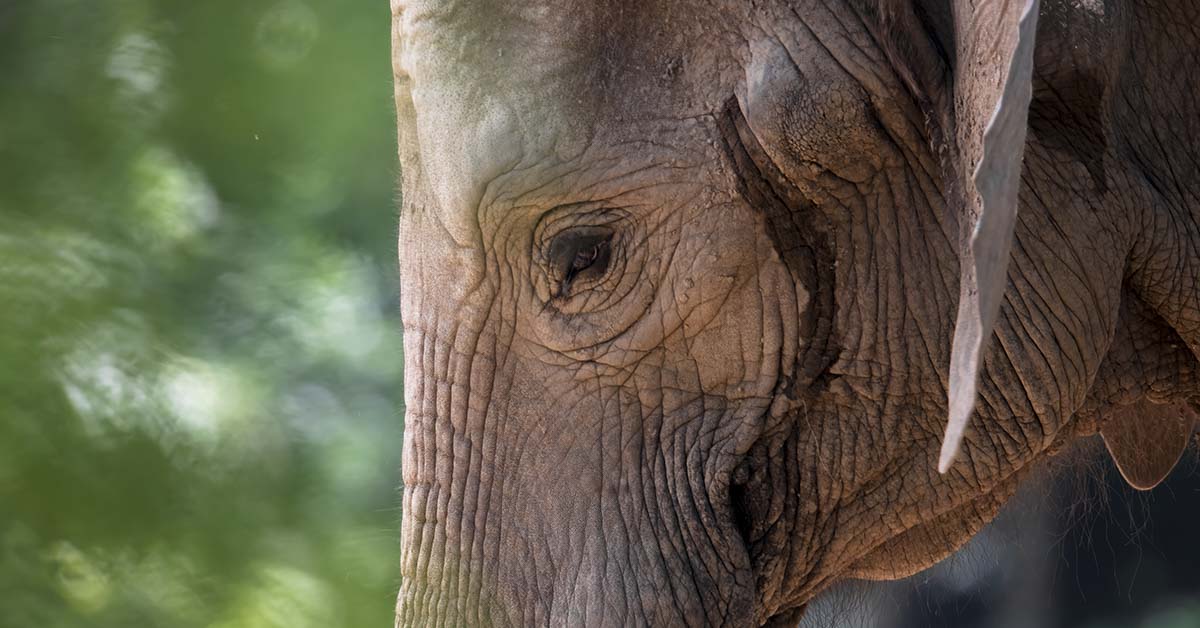Elephant rides are a common tourist attraction, but wildlife rescue group in Thailand is warning against the industry. Despite their massive size and strength, elephants are not naturally conditioned for carrying riders. So those forced into service for tourists often suffer severe medal issues as a result. Take Pai Lin, for instance. The Wildlife Friends Foundation in Thailand (WFFT) shared a photo of the 71-year-old female who was subject to 25 years in the tourism industry. Her previous owners forced her to carry six people at a time, which severely disfigured her back. Her appearance in the photo is upsetting many compassionate animal lovers online.
Elephants Suffer From Tourist Rides
WFFT explained what had happened to poor Pai Lin’s body to cause this deformation. “Pai Lin’s back still bears scars from old pressure points,” they said. “This continuous pressure on (elephants’) bodies can deteriorate the tissue and bones on their back, causing irreversible physical damage to their spines.” [1]
Despite the popularity of elephant rides, especially in the Southeastern Asian tourist industry, animal rights activists state that this practice is a form of cruelty. Elephants are not structured to carry riders, which can cause severe injuries. “Their spines extend upwards,” said Tom Taylor, WFFT’s project director. “Constant pressure on their backbones from tourists can result in permanent physical damage — which can be seen in Pai Lin.”
Additionally, elephants suffer abuse and exploitation in other industries like logging and trekking. Some are literally worked to death after suffering malnutrition and exhaustion. Similarly, Pai Lin was in poor condition when she came into the care of the WFFT. “Pai Lin arrived at our sanctuary in 2006 after working in the Thai tourism industry,” said Edwin Wiek, director and founder of the WFFT. “She was given up by her previous owner who felt that she was too slow and always in pain and couldn’t work well anymore.”
“Elephants are not bred to be ridden”
Wiek explained that the group shared the elephant’s story to bring awareness to the treatment of these animals so people could avoid these types of attractions. “It’s important to understand that elephants, unlike horses, are not bred to be ridden. They are not domesticated animals and are taken from the wild and kept in awful conditions,” he said.
Today, Pai Lin has retired from her back-breaking job and lives in WFFT’s sanctuaries with 24 other rescued elephants. Despite the comforts of her new life, her years of labor are obvious. She will have to live with her deformed spine for the rest of her life, but Wiek said she is “doing well” otherwise. “She’s definitely an introvert and doesn’t really enjoy being around the company of other elephants but likes attention from people,” he added. “She does get moody when it involves food but she is a very lovely elephant.”
“Tourists, avoid elephant rides”
WTTF isn’t the only organization advocating for elephants. World Animal Protection (WAP) released a study in 2017 where they assessed almost three thousand elephants. They found that over three-quarters of these creatures lived in “severely cruel” conditions. For instance, many were tied to chains under 3m long, forced to stand on concrete, and endure crowds, loud traffic, and music. Additionally, elephant “training” tends to involve separating babies from their mothers from a young age and punishment with bullhooks.
Dr. Jan Schmidt-Burbach, Global Wildlife and veterinary adviser at WAP, spoke out against this aspect of tourism. “The cruel trend of elephants used for rides and shows is growing,” she said. “We want tourists to know that many of these elephants are taken from their mothers as babies, forced to endure harsh training, and suffer poor living conditions throughout their life.“
“There is an urgent need for tourist education and regulation of wildlife tourist attractions worldwide. Venues that offer tourists a chance to watch elephants in genuine sanctuaries are beacons of hope that can encourage the urgently-needed shift in the captive elephant tourism industry.” [2]
The Dark Side of Animal Tourism
Unfortunately, elephant rides aren’t the only problematic tourist attractions. Other animal attractions include swimming with dolphins, petting lion cubs, and taking pictures with sloths. Attractions with dolphins often depend on specimens — captive-bred or wild — in enclosed pools detached from their natural habitat. When it comes to lions, cubs only a week old become available to tourists to pet, and the several-month-old ones join walking operations.
Unfortunately, these cubs cannot survive well in the wild after this and often end up in zoos or hunting camps for trophy hunters. Many towns near the Amazon offer photo ops with illegally-captured sloths. Sloths tend to die within weeks of their capture. [3] The 2013 documentary Blackfish spotlighted animal cruelty in the tourism industry. The film followed the sad life of an orca at SeaWorld.
Outrage from viewers led to the decline in the park’s popularity and the new policy to eventually end orca shows. As of now, sanctuaries and rescue centers that don’t breed animals are good places for tourists to see well-cared-for animals up close in their natural habitat. [4]
Keep Reading: Highly Intelligent and Possibly Invincible Super Pigs Are Invading America
Sources
- “This is what years of tourist rides do to an elephant.” CNN. Heather Chen. March 10, 2023
- “Elephant tourism is ‘fuelling cruelty’.” BBC News. Claire Marshall. July 6, 2017
- “Suffering unseen: The dark truth behind wildlife tourism.” National Geographic. Natasha Daly. June 2019
- “Riding elephants and other mistakes seasoned travelers are still making.” CNBC Travel. Monica Pitrelli. August 28, 2020

